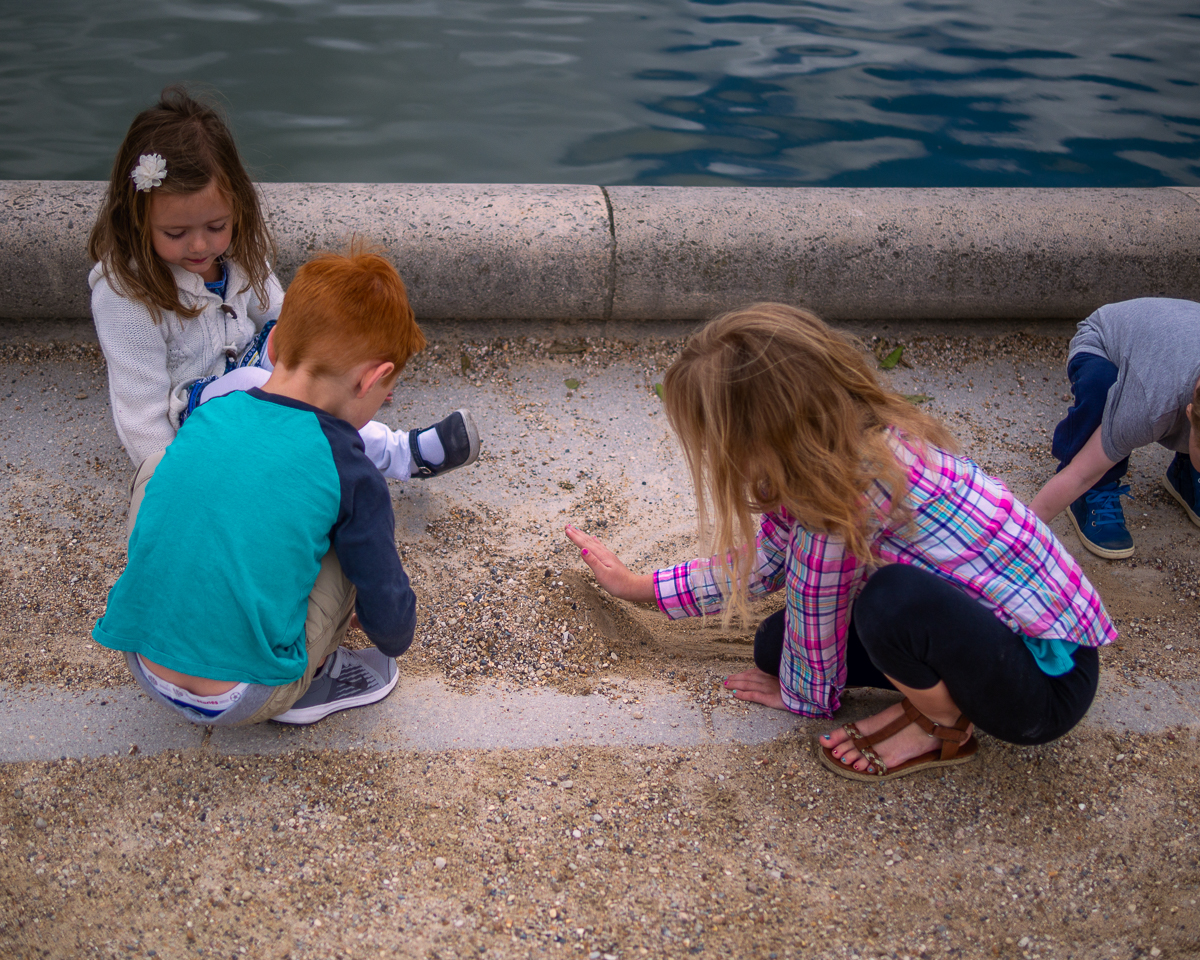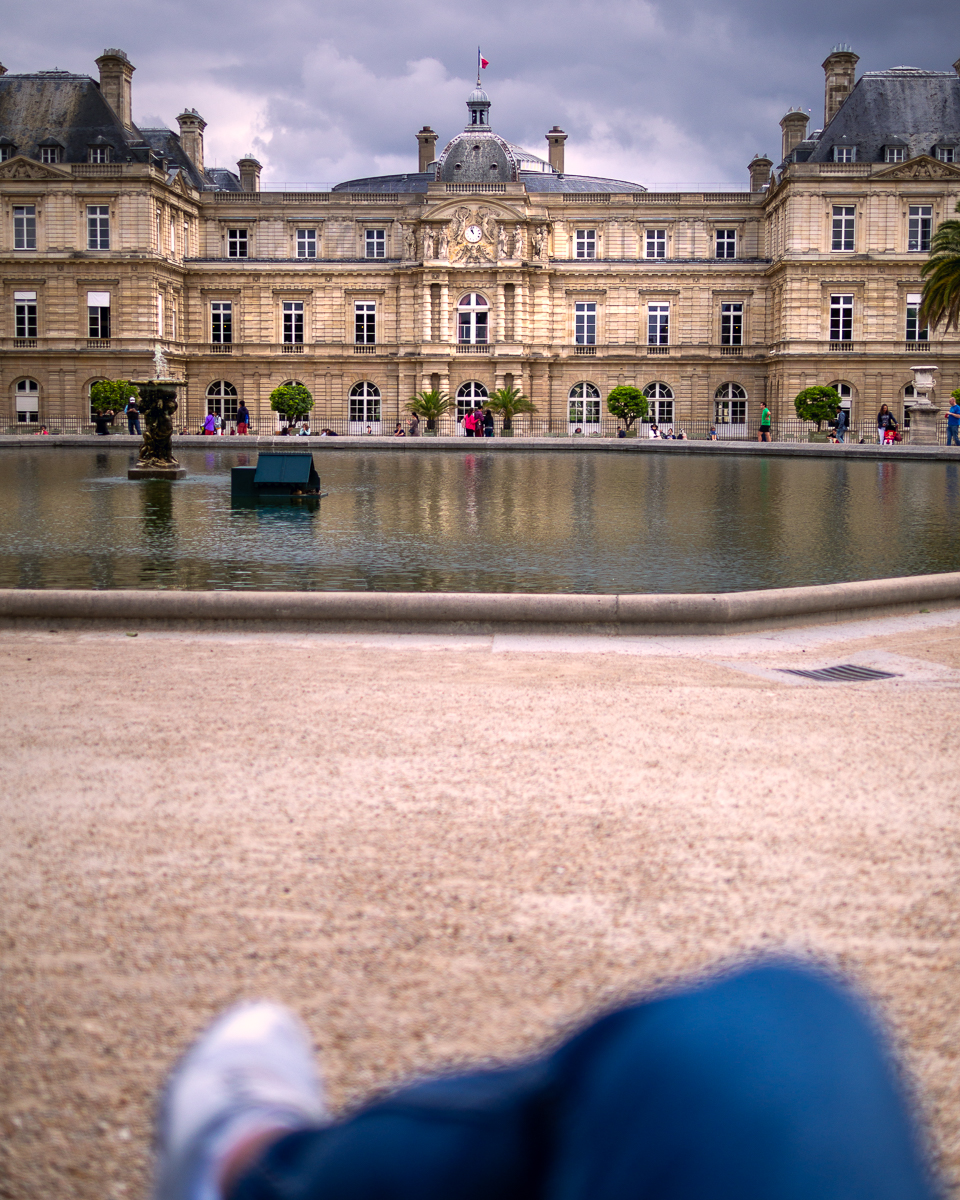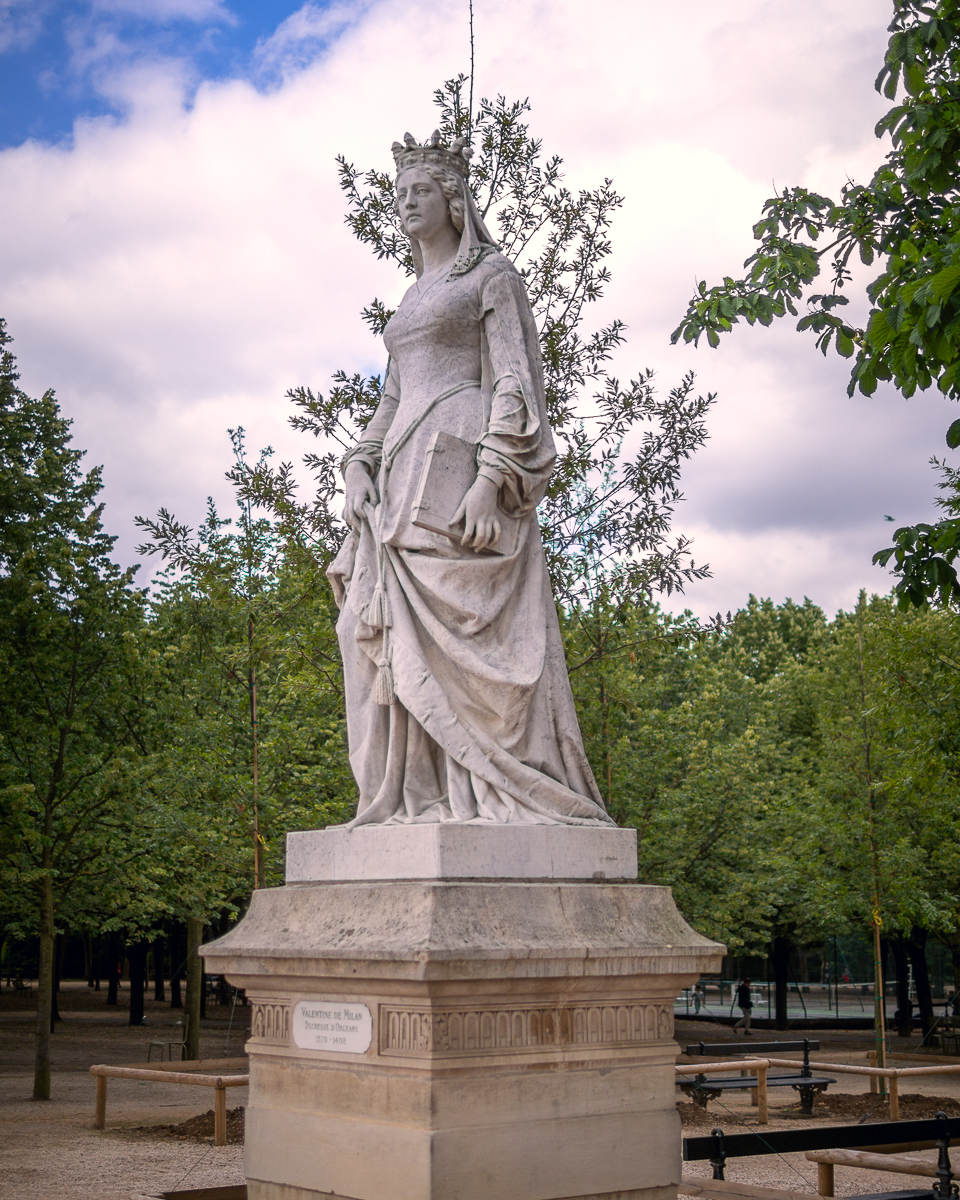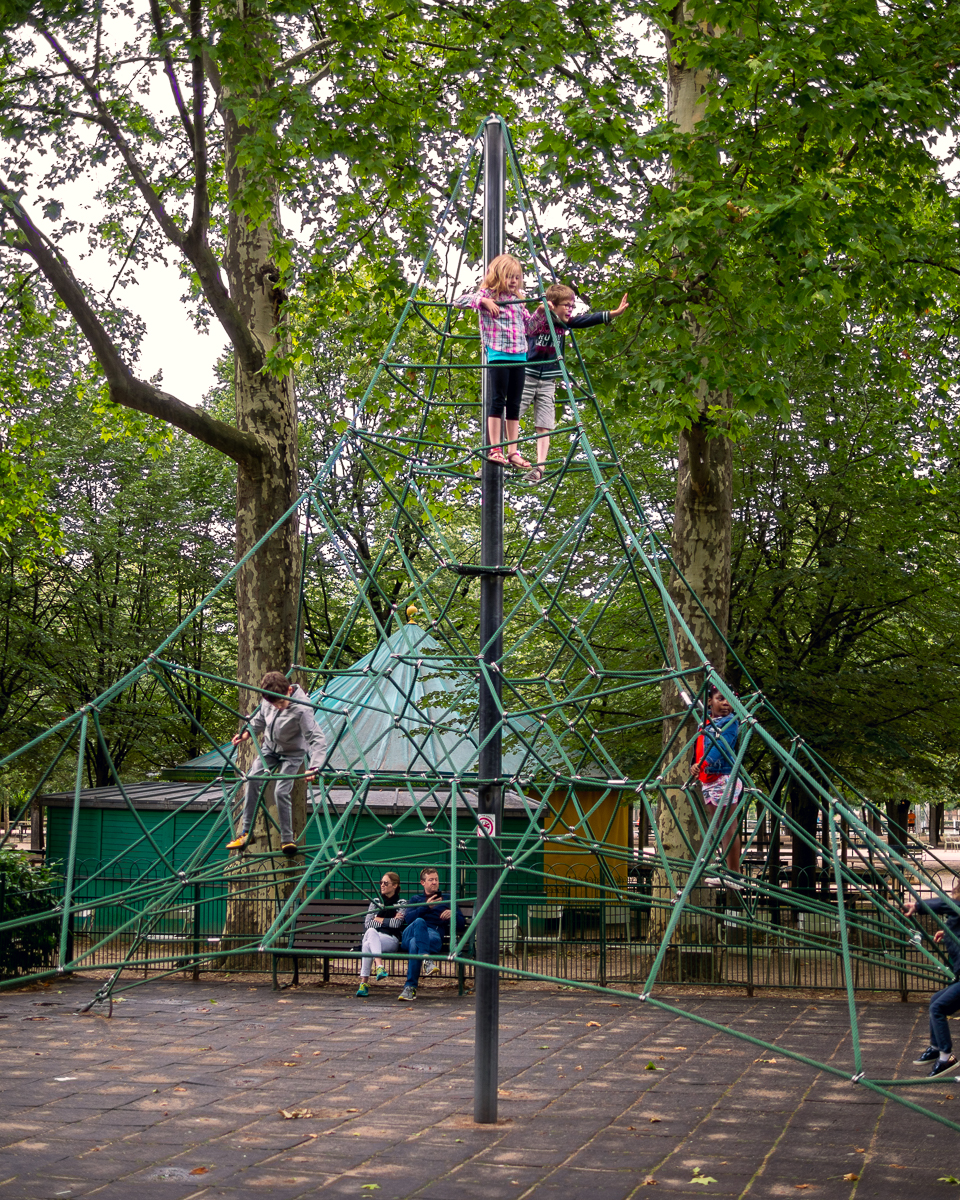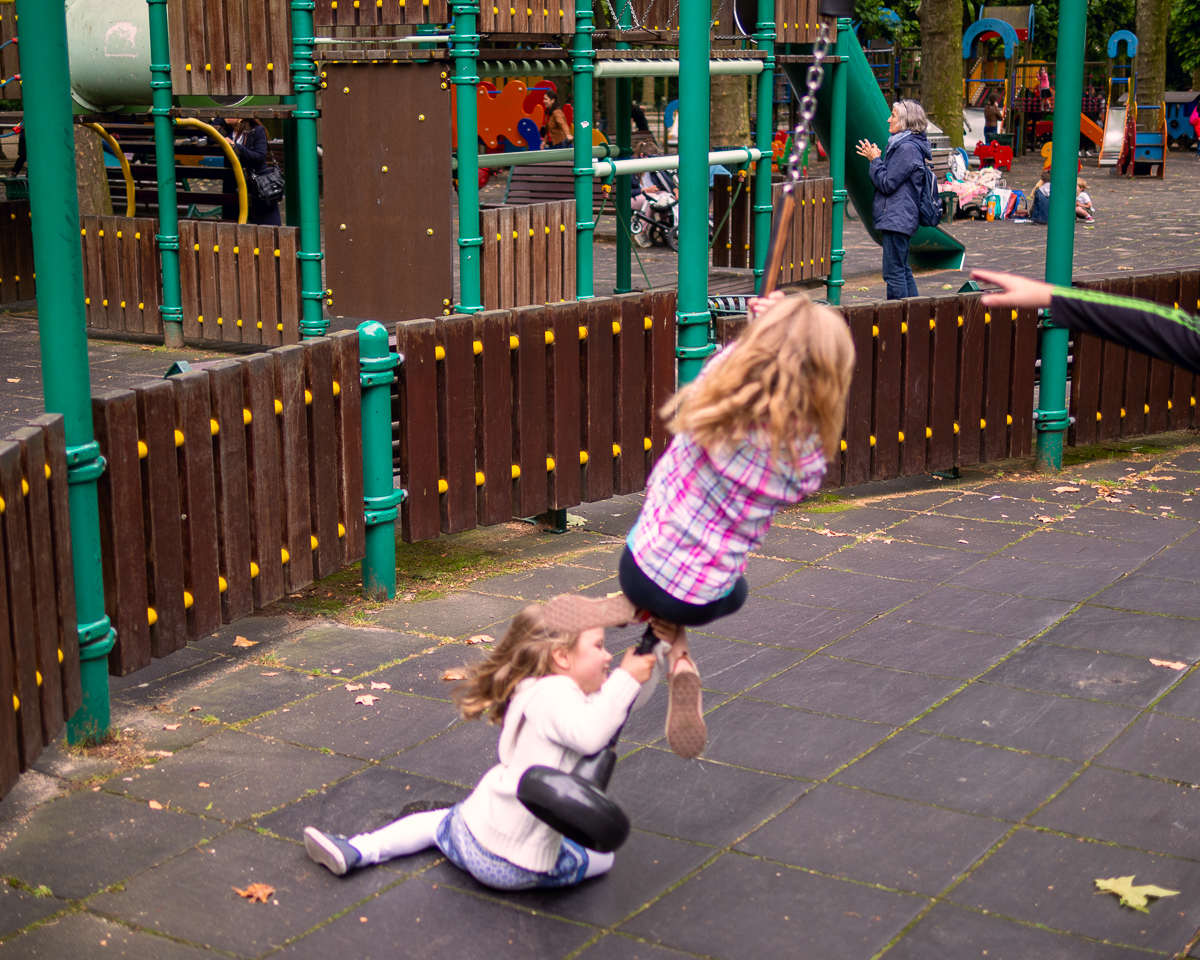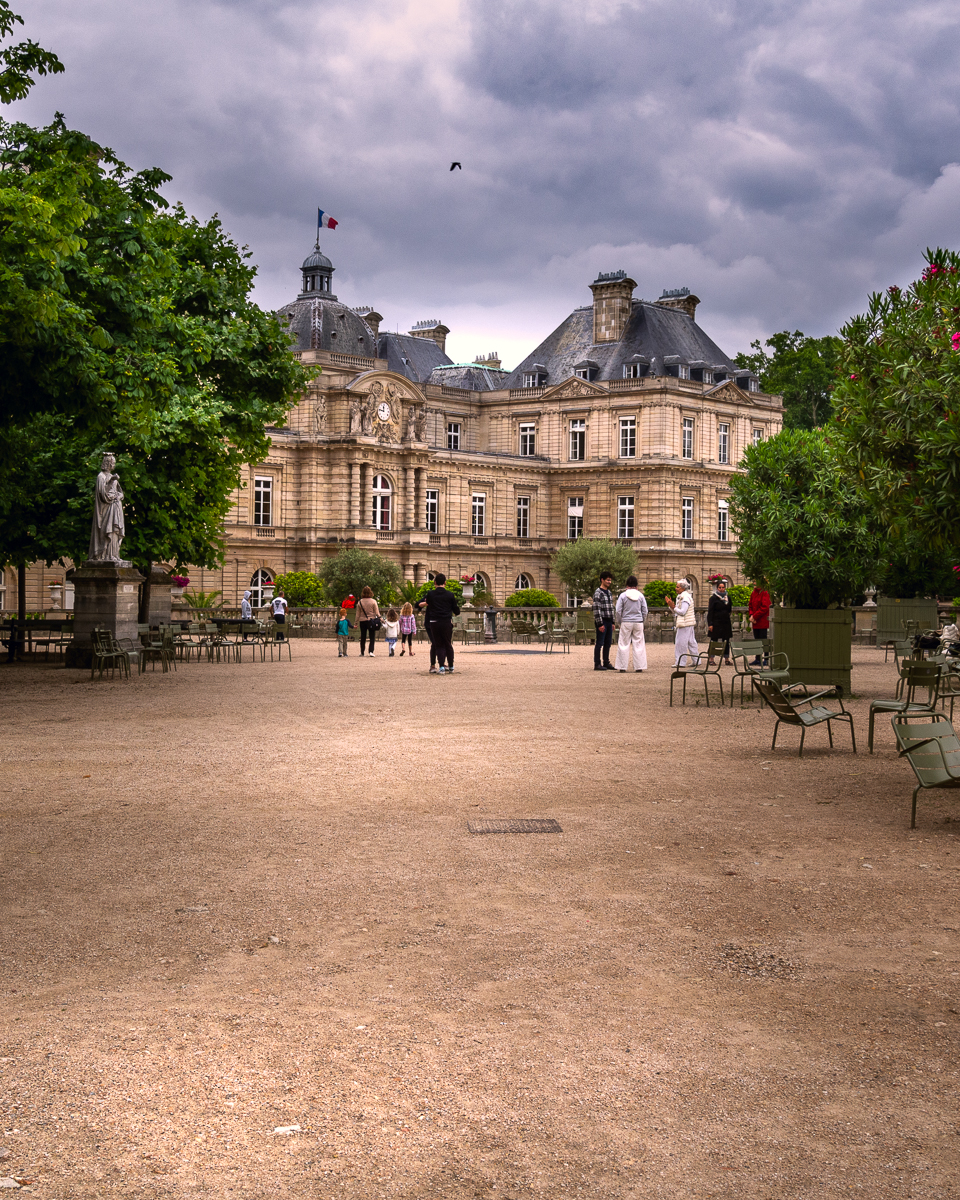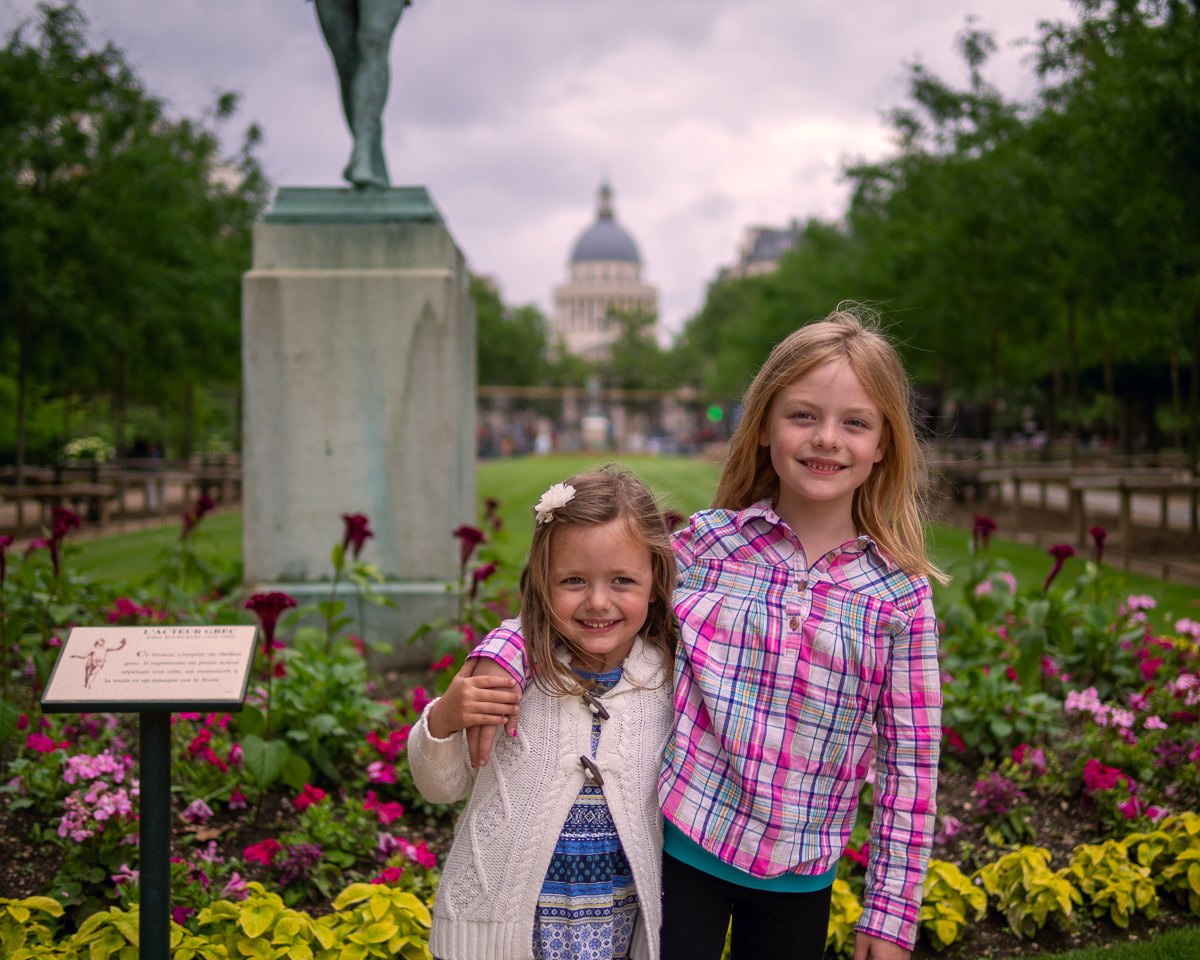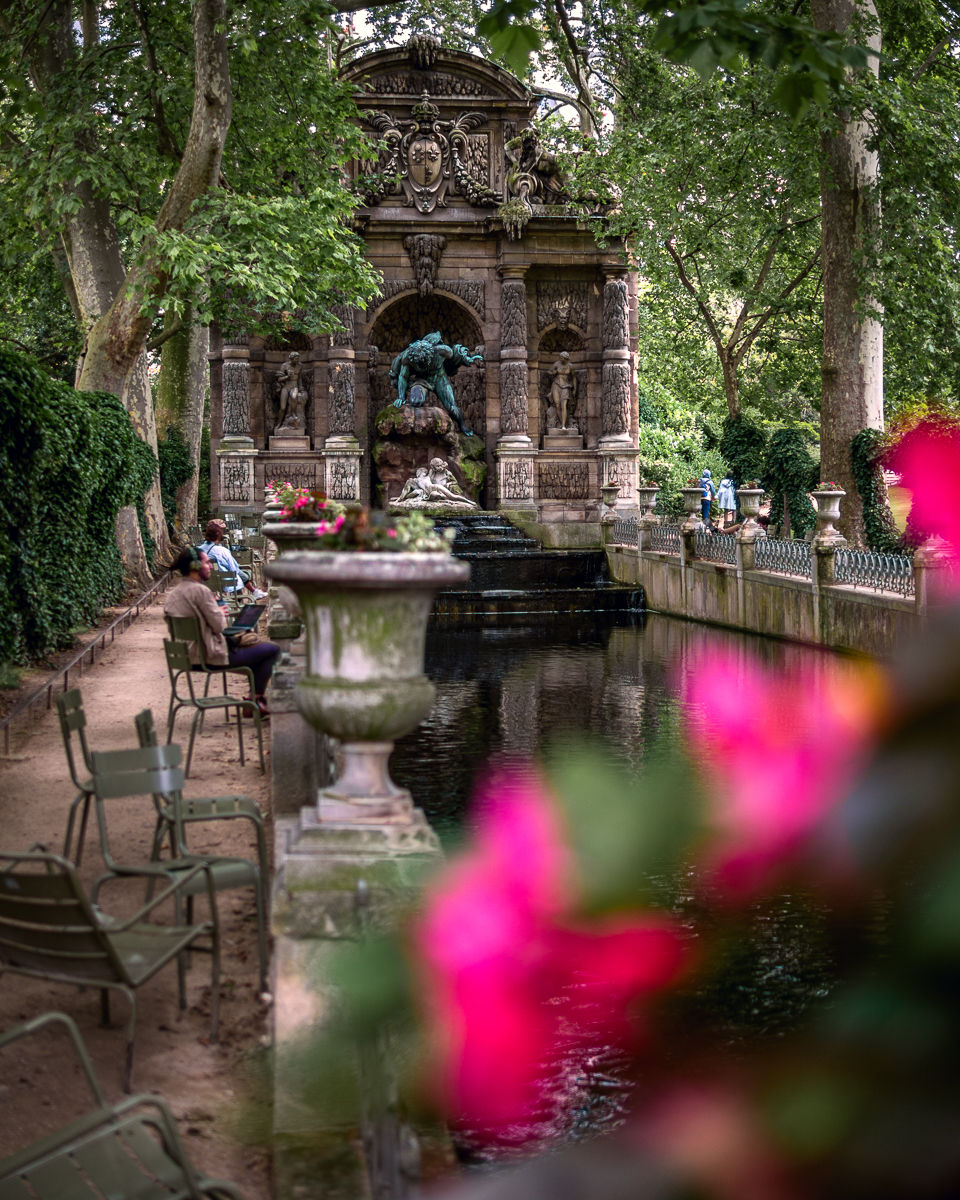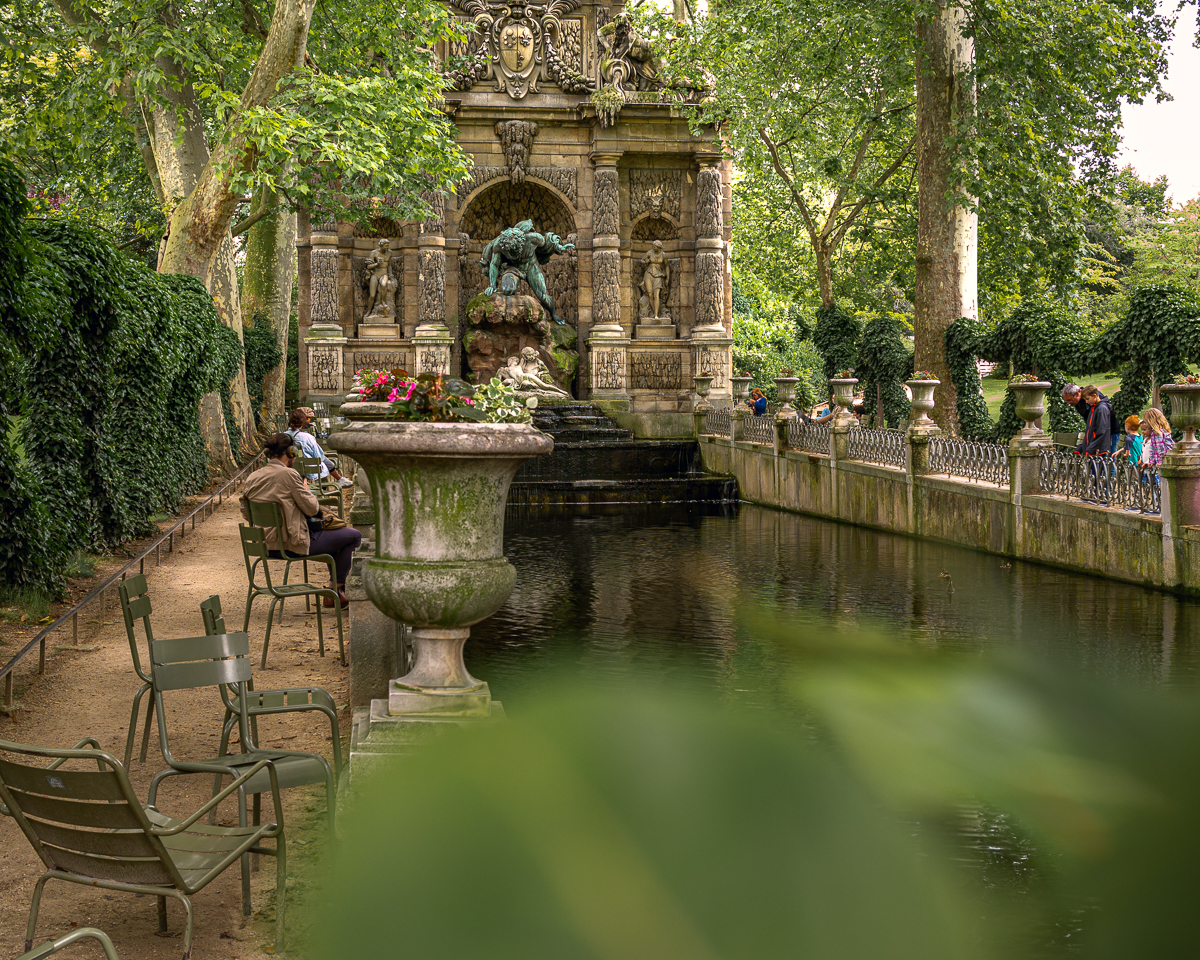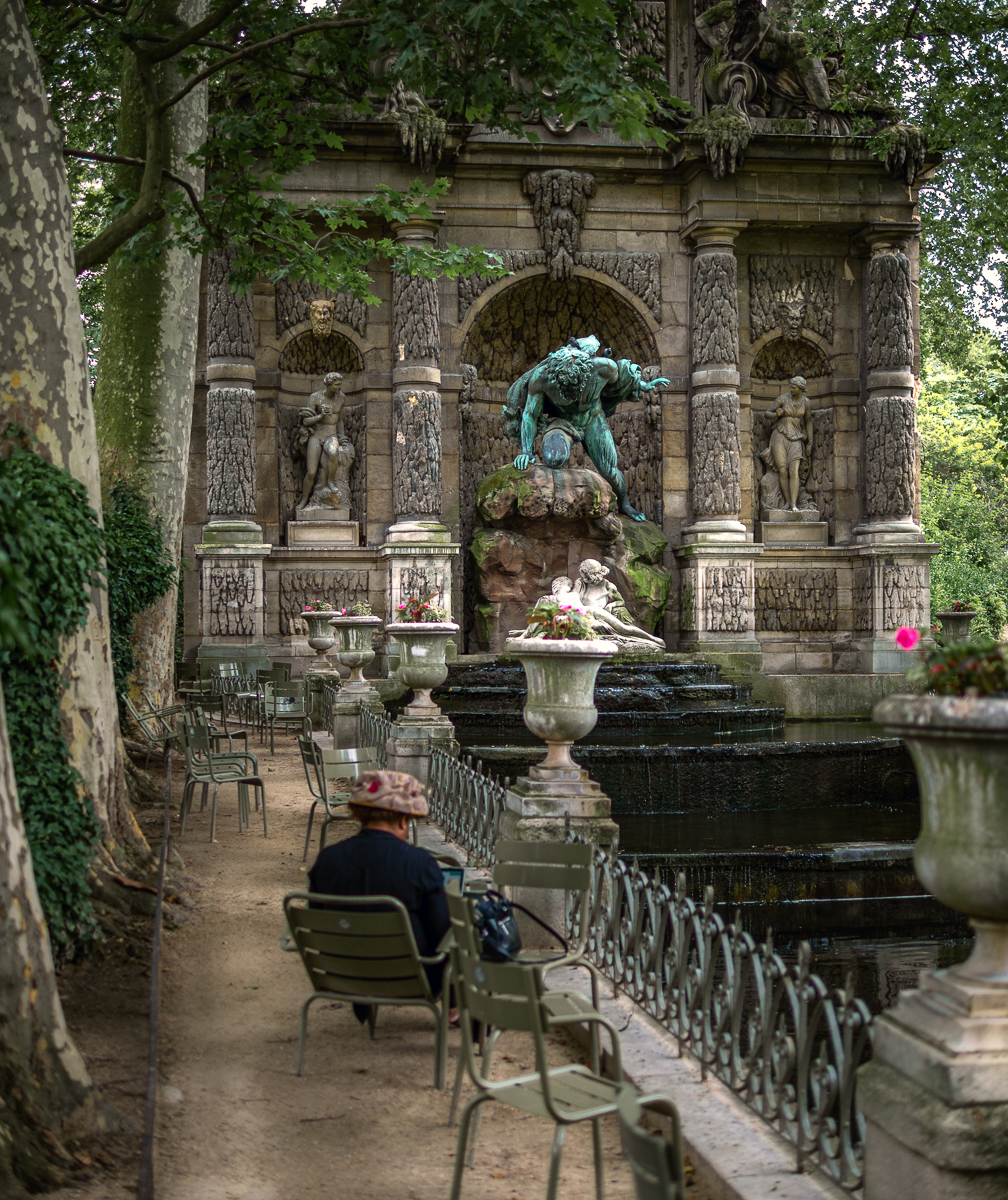Luxembourg Palace was built by the recently widowed Marie de Médici in the 17th century. With her king husband dead, Marie retreated from the Tuileries to a new palace where she would raise her son until his ascent to the throne as Louis XIII. Importing Italian architects she modeled this new palace after the Pitti Palace, her childhood home in Florence. Over the next century it would be passed down from noble to noble eventually becoming a precursor to the Louvre museum prior to the Revolution.
I sank further into the metal seat, letting my muscles surrender to the grip of the chair. I imagined what it must have been like for Napoleon to walk out of the main entrance for the first time after seizing the position of First Consul in a coup. The Luxembourg Palace would be his first home as France’s sole ruler.
Two friends talked while leisurely strolling the grounds in the distance. One of them was walking a small fluffy white dog and their pace indicated they had no end destination. I was transported back to Ernest Hemingway’s memoirs. As a young penniless couple he and Hadley frequented the gardens, their first and second Parisian homes only blocks away. Hemingway described a 1920s Paris that in many ways was very different, yet very similar to today. Sheep would have been herded in the streets. Cafe windows were black from smoke and soot, and the smell of bodies from the drunkards and prostitutes perfumed the air. The old houses had toilets that emptied into cesspools, and horse-drawn tank wagons pumped out the sewage at night. But those old white homes are the very same ones we see today. Only now they aren’t heated by the boulets, “moulded, egg-shaped lumps of coal dust” nor occupied by the poor and seedy street folk.
The Palais du Luxembourg and garden are the same today as they were in Hemingway’s time, a century ago, as well as in Napoleon’s time a century before that. Hemingway often met Gertrude Stein as she walked her dog in the garden. He would visit the Luxembourg museum on the way home from his small writing studio, a couple of blocks to the east. He hurried to view the Cézannes, Monets and Manets before they darkened in the fading light of day. Stein would invite Ernest and Hadley to her nearby home with its large painting-filled studio. “It was like one of the best rooms in the finest museum,” Hemingway wrote, “except there was a big fireplace and it was warm and comfortable.” The other star studded hangers-on included literary heavyweights like F. Scott Fitzgerald and fellow neighbor Ezra Pound. What wonderful, if not alarming, conversations they must have had inside those walls. I closed my eyes and tried to wash away the lingering sweet stomach with visions of bygone eras.













